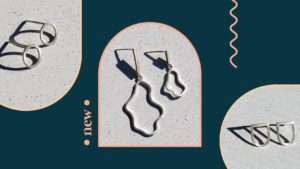Solosix
Our Rating: 4 Stars - Good
Price: $ $ $ $
Country of origin: United States
Official brand website: Visit

Solosix: Navigating Fashion Sustainability with Purpose
Discover Solosix, a brand championing sustainability in fashion through lower-impact materials and waste reduction. Uncover their commitment to environmental responsibility, workers’ rights, and animal welfare, earning them a “Good” overall rating.
Key Takeaways:
- Lower-Impact Materials: Solosix prioritizes eco-friendly materials, contributing to a reduced environmental impact in the fashion industry.
- Waste Minimization: Solosix controls waste by limiting production runs, showcasing dedication to a sustainable and efficient supply chain.
- Workers’ Rights Focus: While room for improvement exists, Solosix traces most of its supply chain, emphasizing transparency. Formalizing a Code of Conduct and ensuring living wages are areas to enhance.
- Animal Welfare Commitment: Solosix receives a positive rating for avoiding animal-derived materials, incorporating recycled wool, and steering clear of exotic animal skin, down, fur, and angora.
- Overall “Good” Rating: Despite areas for improvement, Solosix’s dedication to sustainability and eenvironmental responsibility earns them a commendable “Good” overall rating.
About Solosix
Solosix stands at the forefront of the fashion industry’s sustainability revolution, championing environmental responsibility and innovation. Their dedication to reducing carbon emissions, managing wastewater, and advocating for a circular economy reflects a significant stride towards creating an eco-friendly fashion landscape.
Established in 2015, Solosix, founded by Nikki Chapman, is a knitwear brand based in Los Angeles. Nikki, a 2005 graduate with a BA (hons) in Fashion Design from Kingston University, London, has garnered experience in Italy, Hong Kong, and LA, drawing inspiration from her English upbringing, travels, vintage knitwear, and architecture.
Solosix exclusively utilizes natural, biodegradable yarns crafted with minimal environmental impact. The brand is dedicated to exploring innovative materials and methods that align with these eco-friendly standards. In ensuring transparency with partners, Solosix prioritizes fair and respectful treatment for every individual involved in the production process.
Motivated by originality, Solosix doesn’t confine creativity to fleeting trends. Influenced by classic sportswear and traditional knitting techniques, the brand brings a modern twist to this age-old craft. The aesthetic celebrates effortless versatility with a playful attitude, emphasizing timeless pieces that are anything but mundane.
In essence, Solosix, with its roots in Nikki Chapman’s diverse experiences, stands as a beacon of sustainability and creative independence in the knitwear landscape
Prioritizing Sustainability Through Materials

- GOTS Certified Organic Cotton:
- Strict adherence to environmental and social standards.
- Significantly lower water usage compared to conventional cotton.
- Dyeing Process:
- No use of harmful chemicals in yarn dyeing, including formaldehyde and bleach.
- Dyes meet toxicity and biodegradability requirements, avoiding Azo dyes.
- Organic Cotton Benefits:
- No pesticides, insecticides, herbicides, or GMOs.
- Eliminates the risk of pesticide residue on garments, preventing allergies.
- Alpaca Yarn Source (Peru):
- 100% renewable, natural, and biodegradable.
- Hypoallergenic with no lanolin, reducing allergy risks.
- Resistant to pilling, maintaining a cleaner appearance.
- Stronger than natural competitors, preserving shape.
- Stain-resistant, fending off grease and oil without difficulty.
- Alpaca Grazing Impact:
- Gentle on pastures, promoting regeneration by leaving roots intact.
- No lanolin coating, reducing water and chemical use compared to sheep’s wool.
Solosix distinguishes itself by championing lower-impact materials, earning commendations for its commitment to a reduced environmental footprint. This strategic choice is pivotal in curbing the brand’s overall environmental impact. Solosix contributes significantly to the broader goal of sustainable and responsible fashion by opting for materials with a gentler ecological footprint.
Efficient Production and Waste Reduction
In alignment with their dedication to lower-impact materials, Solosix takes purposeful steps to minimize waste within its production process. The decision to limit production runs showcases a proactive approach to waste management. By exerting control over the production scale, Solosix ensures a more efficient supply chain, emphasizing their commitment to crafting a sustainable and waste-conscious production model.
Workers’ Rights: A Call for Improvement
While Solosix diligently traces most of its supply chain, there remains an opportunity to improve workers’ rights. The absence of a formal Code of Conduct signals a specific area where enhancements could be implemented. Addressing critical aspects such as ensuring living wages and promoting gender equality within the supply chain would elevate Solosix’s ethical labor practices, aligning them more closely with sustainability and social responsibility goals.
Animal-Friendly Fashion at the Core
Solosix stands out with a positive rating for its commitment to animal welfare. Despite lacking a formal animal welfare policy, the brand’s conscious decision to avoid animal-derived materials, except for exotic animal hair, deserves recognition. Recycling wool further underscores Solosix’s dedication to animal-friendly and sustainable practices, contributing to the larger narrative of cruelty-free and environmentally responsible fashion.
Conclusion
In summary, Solosix emerges as a trailblazer in sustainable fashion, emphasizing lower-impact materials, efficient waste management, and a commitment to animal welfare. While areas for improvement exist, particularly in workers’ rights, Solosix’s proactive steps toward sustainability showcase a brand on a journey of continuous improvement and ethical responsibility.
FAQs:
Solosix is dedicated to sustainability by prioritizing using lower-impact materials in their production process. This commitment extends to materials with a reduced environmental footprint, emphasizing their dedication to minimizing the fashion industry’s overall environmental impact. Through conscientious material choices, Solosix actively contributes to promoting eco-friendly practices.
Solosix takes a proactive approach to waste reduction by strategically limiting production runs. This deliberate decision allows them to exercise better control over the amount of waste generated in their production process.
Solosix demonstrates a clear commitment to creating a more sustainable and efficient supply chain, aligning with environmentally responsible practices by minimising excess production.
While Solosix showcases transparency by tracing most of its supply chain, there is room for improvement in the area of workers’ rights. The absence of a formal Code of Conduct raises the importance of instituting clear guidelines for ethical labor practices. Ensuring living wages and gender equality within the supply chain are essential aspects Solosix can enhance to strengthen its commitment to workers’ rights.
Solosix maintains a positive stance on animal welfare by avoiding the use of animal-derived materials. Their commitment is evident through using recycled wool in all wool products, showcasing a dedication to sustainable and cruelty-free practices. By steering clear of leather, down, fur, angora, and exotic animal skin, Solosix actively promotes ethical and animal-friendly fashion, contributing to a compassionate industry.
Solosix is rated “Good” overall, underscoring their dedication to sustainability and environmental responsibility. While they have made commendable strides, there are areas for improvement, such as workers’ rights. The “Good” rating reflects a positive commitment to ethical and sustainable practices within the fashion industry.
Solosix can focus on improving workers’ rights to achieve a higher sustainability rating. This includes formalizing a comprehensive Code of Conduct and ensuring that living wages are provided within their supply chain. Strengthening these aspects will contribute to an elevated overall sustainability rating.
While Solosix actively visits its suppliers, the frequency of these visits is not explicitly specified. Enhancing transparency by providing more details about the frequency of supplier visits would increase accountability and reinforce Solosix’s commitment to ethical and sustainable practices.
Solosix distinguishes itself by avoiding animal-derived materials such as leather, down, fur, angora, or exotic animal skin. This commitment reflects a clear stance on ethical and animal-friendly fashion practices, aligning with the brand’s dedication to sustainability and responsible material choices.







